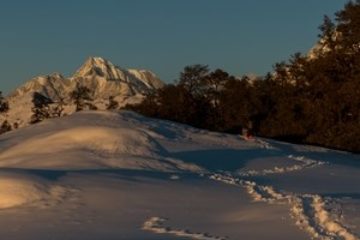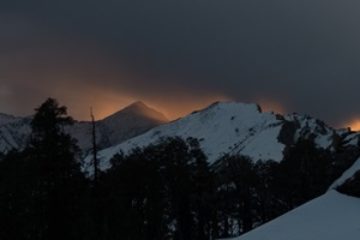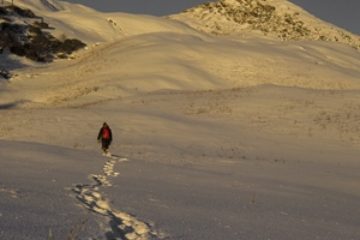The old adage “Health is Wealth” holds very true for any Trekking/Hiking/Backpacking trip , especially on the Himalayas.
Unlike Mountaineering or Rock Climbing ,Trekking is not considered a typical sport activity. By definition this is essentially a recreational activity. Then,
Why do we need to be physically fit before starting a Trekking trip?
The Answer is very simple, the fitter you are, the chances are better that you will extract the most from a trekking trip.
Logically answering the above,
- As we gain higher altitude in a trek, the air becomes thinner. To cope up with the decreasing level of Oxygen we need to build Aerobic fitness.
- Defying gravity and walking for a long duration on a steep slope with a rucksack/day-pack require a moderate level of Strength and Endurance training.
- Above two get coupled on any high altitude Himalayan trek and it is a must that we spend time and effort to address these.
So how do we achieve the desired fitness level needed for a trek?
This is purely quantitative but again depends on present physical condition, which difficulty level the trek will offer and on the age to an extent.
More the time we spend on physical training better is the result. However this a basic guideline to improve spending at least 8 weeks (2 months).
The below training plan is a basic trekking fitness programme for beginners. If you are already in a physical fitness routine for being into any sport or just to live an active healthy life, check our detailed post on advanced fitness programme for trekking and beyond.
Aerobic Fitness:
First Phase:
1) Walking: At the starting days it is a good starter. Walk 4/5 Km everyday, if possible on slopes. Maintain a speed. Complete 5 Km walk withing an hour. Continue for 5 days a week for 3 weeks.
2) Stretching: Once you complete the walk , do some usual regular stretching exercises/free hands including shoulder, neck, arms, waist and legs. Always do the stretching after your body is warmed up. Cold stretching is ineffective an may develop injuries.10 to 15 minutes.
Once you complete the initial 3 weeks you can start building up on it. You can start either of the following:
2nd Phase:
a) Jogging can be done inside a park or on a treadmill. Avoid jogging on concrete or tarred surface and use a properly cushioned running shoe. Initially try to cover 3 Km in 20 minutes and later 5 Km in 30 minutes. Follow stretching exercise as mentioned after the Jog/Run. Continue for 4/5 days a week for 5 weeks span.
b) Cycling is another effective way to increase your aerobic capabilities and to shed extra pounds quickly. If you can do an outdoor cycling, nothing compares to it. But in today’s traffic condition it is difficult. Using a static cycle in home/gym, Initially cover a distance of 5 Km in 20 min with easy to moderate resistance available with the equipment. Later using moderate to high resistance cover a distance of at least 8 Km in 30 minutes. Follow stretching exercise as mentioned after the cycling session. Continue for 4/5 days a week for 5 weeks span.
Strength and Endurance training:
You can start this from 2nd Phase of your Aerobic training. Always do the Strength training after the Aerobic training and Stretching.
Aim on building strength in your back, shoulders, arms, and abdominal muscles. Your leg muscles will get stronger through the aerobic training.
a) At home you can do push-ups and sit-ups (abdominal crunches). Do three sets each with a repetition of 10-15.
b) Pull-up or Chin-ups is difficult to start with. If you are able to do then do 3 sets with 5-10 repetitions. Otherwise take someone’s help and do assisted pull-ups of 3 sets with 8 to 12 repetitions.
c) Free squats of 3 sets with 10-15 repetitions. Avoid this if you have/had knee injuries.
d) In a gym or home you can do few basic weight training like biceps-curl, triceps press and shoulder press. Consult a physical trainer before this workout. Do 3 sets of each with weights ( as suggested by the trainer ) for 8-10 repetitions.
Does an experienced trekker also need physical fitness?
Certainly! Each and every time we go to the mountain, we must have the physical fitness level to deal with. The only advantage he or she has over a first timer is that knowing or expecting things which are not common back in our home. This deals purely with the mental preparation before a trek. As this is qualitative in nature so it is unjust to expect from the first timers. Once experienced on ground reality, we understand and develop a sense of it.
Check out this video




